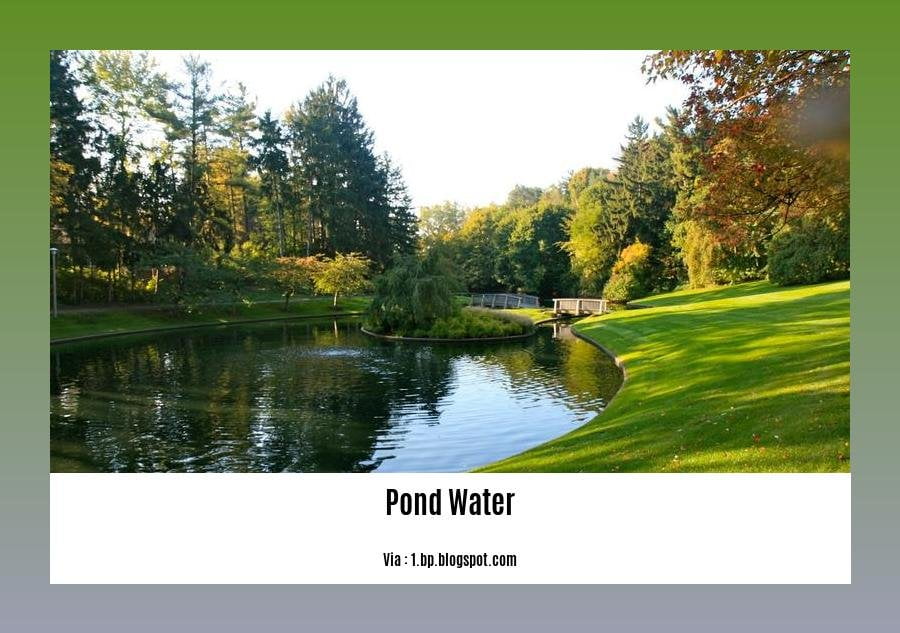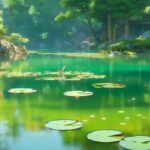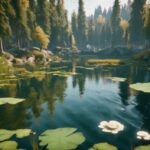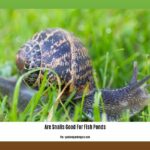Pond water is often overlooked, but it holds a myriad of fascinating facts and wonders waiting to be explored. In this article, titled “Fascinating Facts About Pond Water: Exploring the Wonders of Aquatic Ecosystems,” we delve into the formation, stratification, and classification of these unique water bodies. By understanding the complex characteristics and processes found within pond ecosystems, we gain insight into the intricate balance of life that exists beneath the surface. Join us on this journey as we uncover the hidden secrets of pond water and appreciate the incredible diversity it harbors.
Key Takeaways:
- Ponds are important freshwater habitats that support diverse wildlife.
- They serve as vital ecosystems for plants, insects, fish, and amphibians.
- Ponds are temporary water bodies and can dry up during droughts.
- They are typically formed by rainwater accumulation or melting snow.
- Ponds are lentic water ecosystems, supporting a wide range of species.
- They can host plants, fish, insects, birds, reptiles, amphibians, and mammals.
- Ponds have more freshwater life than any other UK freshwater habitat.
- Ponds with various features tend to have a greater variety of wildlife.
- The largest pond in the world is Langley Pond in South Carolina, measuring 285 acres.
- Temporary ponds usually do not have fish living in them.
- Ponds and lakes differ but share some similarities.
- Ponds and lakes are not permanent and can undergo changes over time.
Sources:
– Facts.net: 13 Facts About Ponds
– Pond Informer: Facts About Ponds
Facts About Pond Water
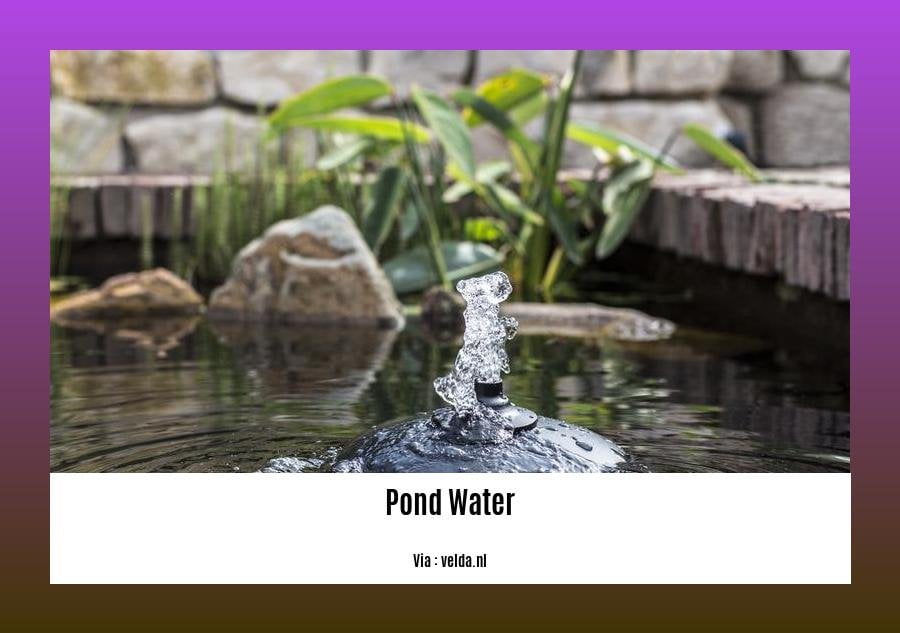
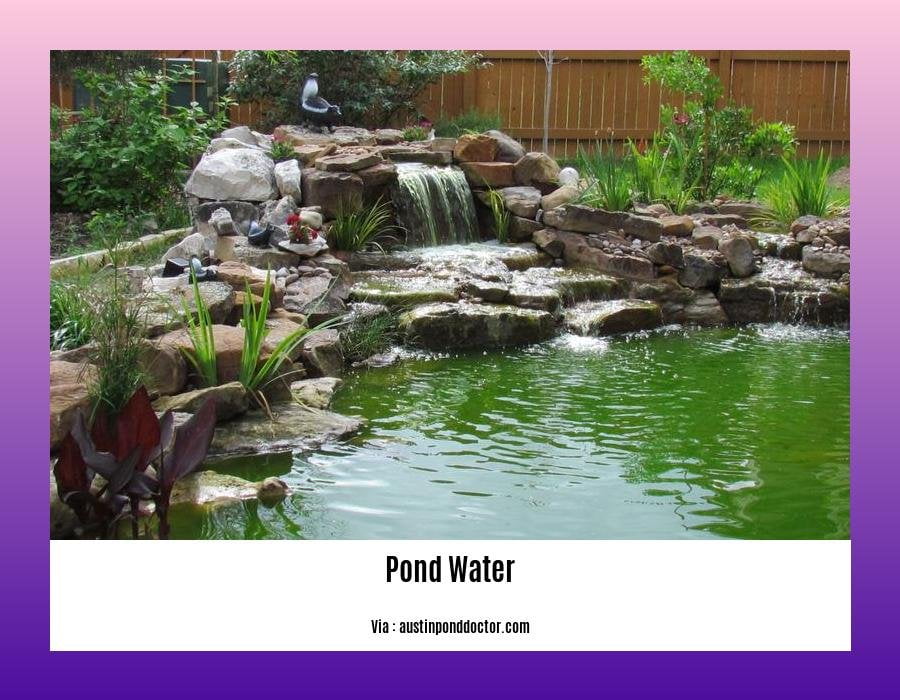
Ponds, those serene bodies of water that dot our landscapes, harbor a wealth of secrets beneath their still surface. Let’s delve into the fascinating world of pond water and uncover some intriguing facts!
Pond Ecosystems: A Biodiverse Haven
Ponds are natural freshwater habitats that teem with life. These miniature ecosystems play host to a myriad of plants, insects, fish, and amphibians. Their calm waters provide a home and a crucial breeding ground for these diverse creatures.
Temporal Water Bodies
Unlike their more steadfast counterparts, ponds are temporary water bodies. They are typically formed by the accumulation of rainwater or the melting of snow. These delicate ecosystems may even dry up completely during periods of drought, only to be reborn with the return of water.
A Hub of Life
Ponds are lentic water ecosystems, meaning they are still or slow-moving. This tranquil nature allows them to support a wide array of species. From plants and fish to insects, birds, reptiles, amphibians, and even mammals, the rich abundance of life in ponds is truly awe-inspiring.
The Power of Pond Features
Ponds with diverse features tend to harbor a greater variety of wildlife. Winding shorelines, submerged vegetation, and rocky hideouts provide shelter and sustenance for different organisms. These variations in habitat create niches that attract and support an impressive range of species.
Beyond Boundaries: The Line Between Ponds and Lakes
While ponds and lakes may seem similar, they possess distinct characteristics. Ponds are smaller, shallower bodies of water, while lakes are larger and deeper. However, both can undergo transformations over time. Nature’s ever-changing hand shapes these water bodies, leading to the birth of new habitats and the alteration of existing ones.
In Search of Fish
Have you ever wondered why fish are not commonly found in temporary ponds? Well, the answer lies in their transitory nature. Temporary ponds often dry up, leaving behind isolated puddles that are incapable of sustaining fish populations. However, other aquatic creatures, like resilient amphibians, have evolved to thrive in these challenging environments.
The Grandeur of Langley Pond
Did you know that the largest pond in the world is Langley Pond in South Carolina, measuring an impressive 285 acres? This sprawling water wonderland stands as a testament to the sheer scale and beauty that ponds can possess.
Protecting Our Precious Water Resources
As we explore the wonders of pond water, it’s crucial to remember the importance of preserving and protecting these invaluable resources. By safeguarding the delicate balance of pond ecosystems, we ensure the continued survival of the fascinating creatures and intricate networks that depend on them.
Strive to be a steward of our watery world, and let the profound beauty of pond water inspire you to cherish and treasure our precious natural habitats.
Table: Features Contributing to Pond Biodiversity
| Pond Features | Wildlife Attracted |
|---|---|
| Winding shorelines | Birds, insects, reptiles |
| Submerged vegetation | Fish, amphibians |
| Rocky hideouts | Mammals, insects, birds, reptiles |
Note: The table above showcases how various features attract specific wildlife to thrive in ponds.
Source:
– 13 Facts About Pond – Facts.net
– Pond Informer: Facts About Ponds
Check out these fascinating facts about puppies and kittens. You’ll be amazed by what you discover! facts about puppies and kittens
Did you know that salt water pools have numerous benefits over traditional chlorine pools? Dive in and explore these amazing facts about salt water pools! facts about salt water pools
Prepare to be mesmerized by the wonders of the deep blue sea. Explore these captivating facts about sea animals and uncover the secrets that lie beneath the waves! facts about sea animals
[Classification]
Key Takeaways:
– Ponds can be classified based on their water composition, depth, and location.
– Classification provides a framework for understanding and studying different types of pond ecosystems.
Ponds, with their fascinating characteristics and diverse ecosystems, can be classified based on various factors. Classification allows us to categorize and understand the nuances of different pond types, enabling further exploration and research into their unique features.
Classifying Ponds Based on Water Composition
Ponds can be classified based on the source and composition of their water. They can be freshwater, brackish, or even have saltwater connections to the sea, which makes them part of the marine environment. Freshwater ponds rely on rainwater accumulation or melting snow as their primary water source. On the other hand, brackish ponds have a mixture of freshwater and saltwater, offering a unique habitat for specialized species that can tolerate varying salinity levels.
Classifying Ponds Based on Depth
Depth plays a crucial role in classifying ponds. Some ponds are shallow, while others have greater depth. Shallow ponds are often influenced by external factors such as temperature fluctuations, UV radiation, and wind. These factors can have a significant impact on the ecosystem dynamics and the types of organisms that inhabit the pond. On the other hand, deeper ponds may experience temperature stratification, where different water layers have varying temperatures and oxygen levels. This stratification can create distinct habitats within the pond, supporting different species.
Classifying Ponds Based on Location
The location of a pond can also influence its classification. Ponds can be formed through various natural processes, such as floodplains, glacial processes, peatland formation, coastal dune systems, or by the activities of organisms like beavers. These natural processes contribute to the diversity of pond types found across different landscapes. Additionally, ponds can also be formed by isolated depressions filled by runoff, groundwater, or precipitation. The unique geological and hydrological characteristics of these locations impact the composition and functioning of the pond ecosystem.
Understanding the Significance of Classification
Classifying ponds based on their water composition, depth, and location provides a framework for researchers and scientists to study and understand the intricate dynamics of pond ecosystems. By examining the similarities and differences across pond types, we can uncover patterns, explore ecological relationships, and gain insights into the functioning of these vital water habitats. This classification approach allows for targeted conservation efforts, as each pond type requires specific management strategies to preserve and protect its unique characteristics.
In conclusion, classifying ponds based on water composition, depth, and location offers a valuable tool for understanding and exploring the wonders of pond ecosystems. This classification framework enables us to delve deeper into the distinct features and complexities of different pond types, ultimately contributing to our knowledge of the diverse aquatic world and the importance of preserving our precious water resources.
Sources:
– Wikipedia. “Pond – Wikipedia”
– Pond Conservation. “Pond ecology”
FAQ
Q1: How are ponds formed?
A1: Ponds are typically formed by rainwater accumulation or melting snow. They can also be formed by natural processes such as floodplains, glacial processes, or peatland formation. In some cases, they can be filled by runoff, groundwater, or precipitation.
Q2: What is the difference between a pond and a lake?
A2: While ponds and lakes share some similarities, the main difference is their size. Ponds are smaller than lakes and are typically characterized as small, still, land-based bodies of water formed by pooling inside a depression. There are no official criteria distinguishing the two, and the distinction can vary among limnologists and freshwater biologists.
Q3: Can ponds stratify like larger lakes?
A3: Yes, many ponds can undergo a yearly process similar to larger lakes if they are deep enough and protected from the wind. Factors such as UV radiation and temperature stratification can affect pond ecosystems.
Q4: What are the different zones of a pond?
A4: Ponds can be divided into four zones: the vegetation zone, which includes plants such as lilies and cattails; the open water zone, which is the main body of water; the littoral zone, which is the area along the shoreline where sunlight can reach the bottom; and the benthic zone, which is the bottom of the pond.
Q5: How do ponds contribute to the environment?
A5: Ponds provide environmental values and practical benefits. They act as vital ecosystems, supporting a diverse range of species and providing a home for various plants, insects, fish, and amphibians. Ponds also serve as greenhouse gas sinks, helping to reduce the impact of climate change.
- Funny Controversial Topics: 101+ Ideas for Lively Debates - April 24, 2025
- 20 Fun Quiz-20 Questions: Popular Now - April 24, 2025
- Epic Video Game Trivia: A History From Pong to Present - April 24, 2025
